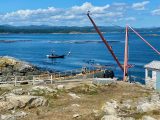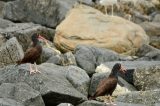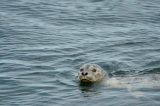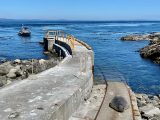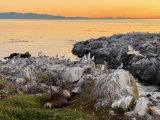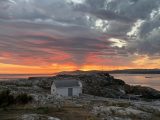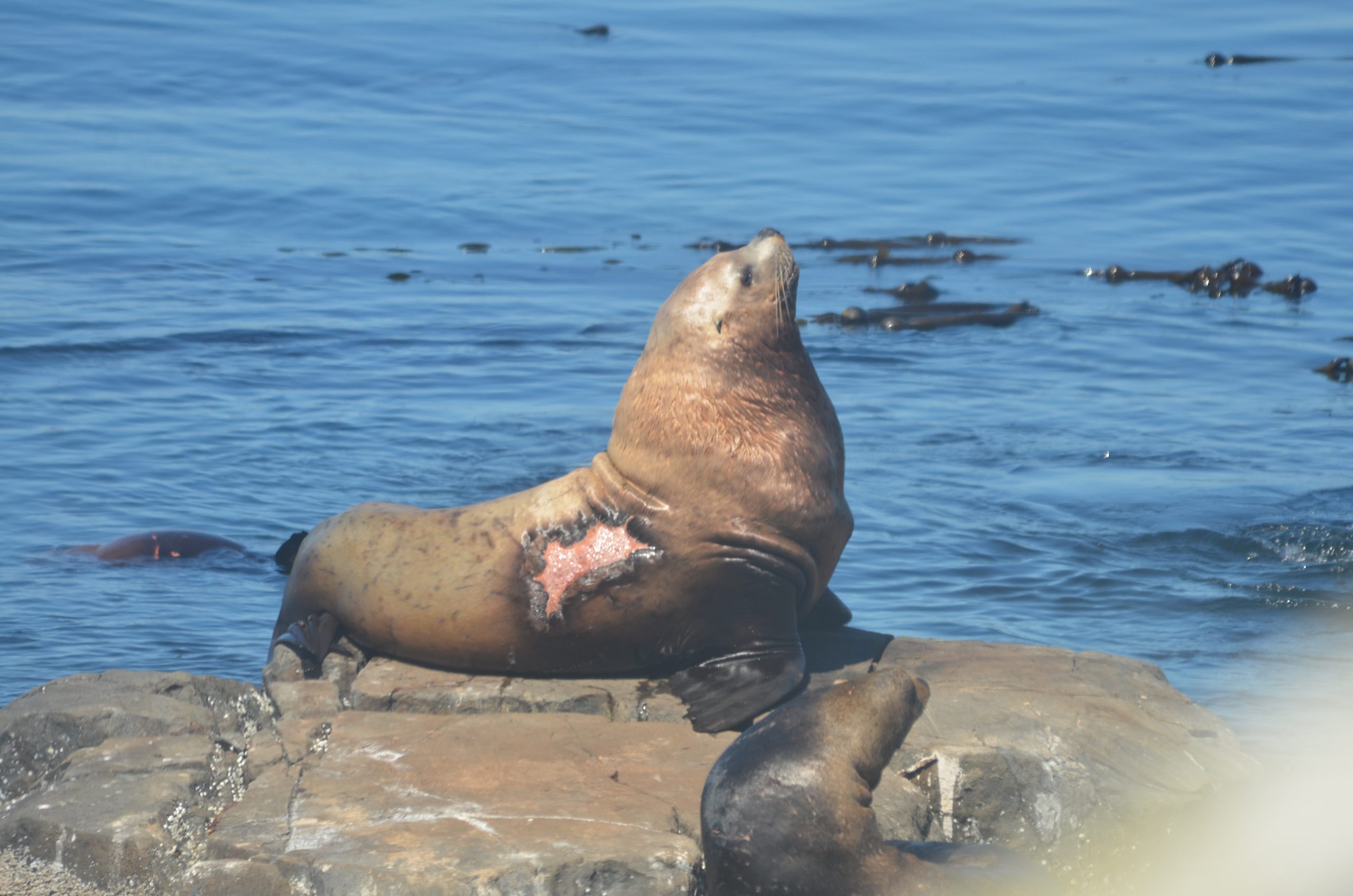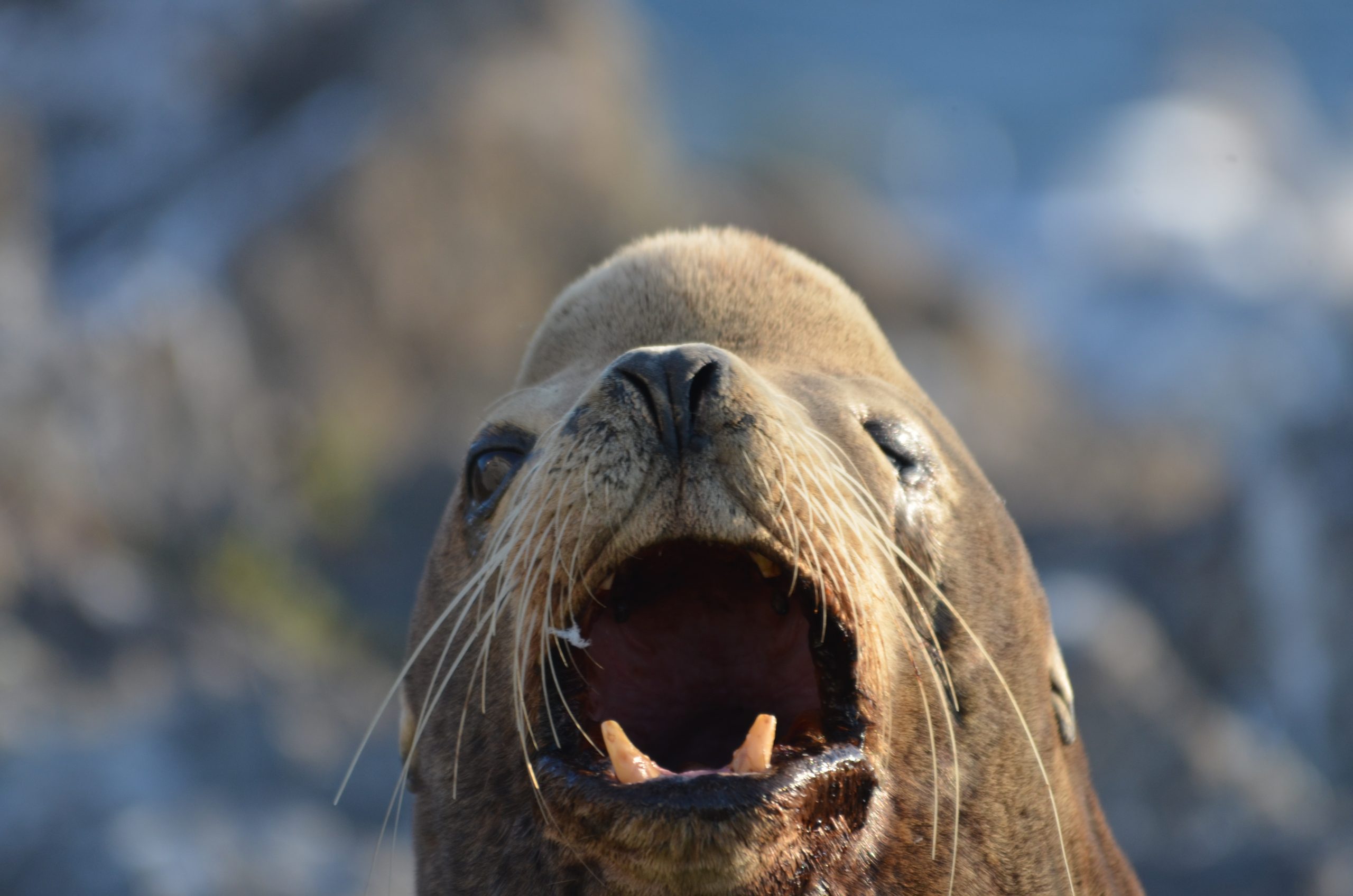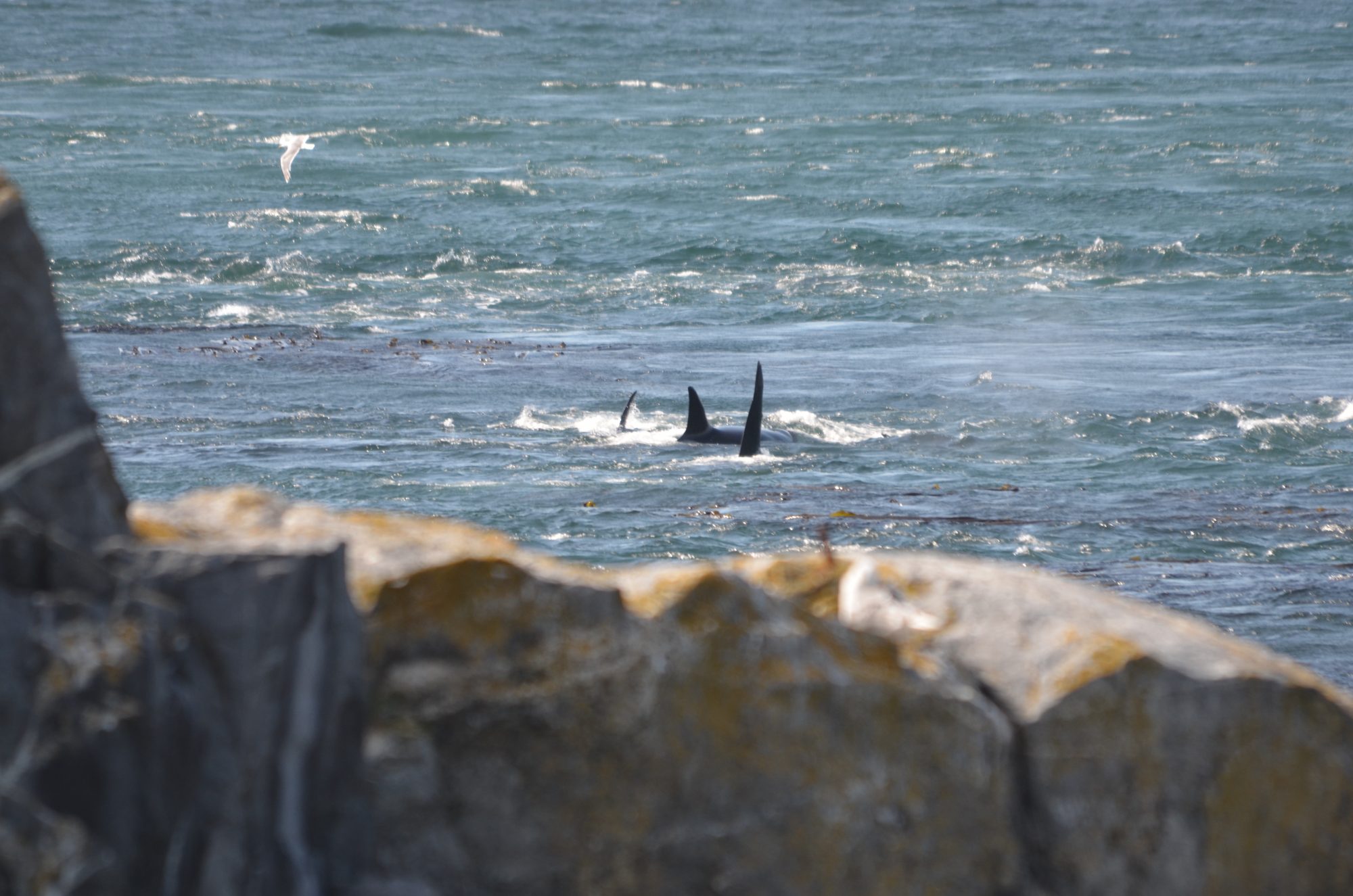Wind: W 9-12 knots
Sea State: calm in morning, rippled in afternoon
Visibility: 10-15 NM
Sky: clear
Temperature: 13-15 °C
Atmospheric CO2: 412.45 ppm (recorded by NOAA at Mauna Loa Observatory, Hawaii)
It rained heavily overnight, giving the windows and pathways a much needed cleaning of the built up bird poop. I have been able to collect run off water from the downspouts on the main house and energy building, which can be used in the pressure washer to clean paths and exterior walls.
This morning, two steller sea lions were spotted with flashers hooked to the left sides of their mouths. One appears to be the sea lion spotted over the past few days. The other has an identical flasher. The Marine Mammal Rescue Centre has been updated, as this makes three different stellers with flashers hooked to their mouths in a week and a half.
Here are a few photos from today:
- A gaggle of Canada geese stopped by this morning to mow the tall grass.
- Two steller sea lions have similar red and silver fishing flashers hooked to the left sides of their mouths.
- This sea lion spent most of the day in this spot on the northern part of the island, near the jetty bay.
- This is most likely the same steller sea lion with a flasher that has been spotted for the past few days on the jetty and middle rock.
- Seven SCUBA divers were exploring in the water off the jetty early this afternoon.
- A 354m container ship bound for South Korea passes near the south end of the Ecological Reserve.





